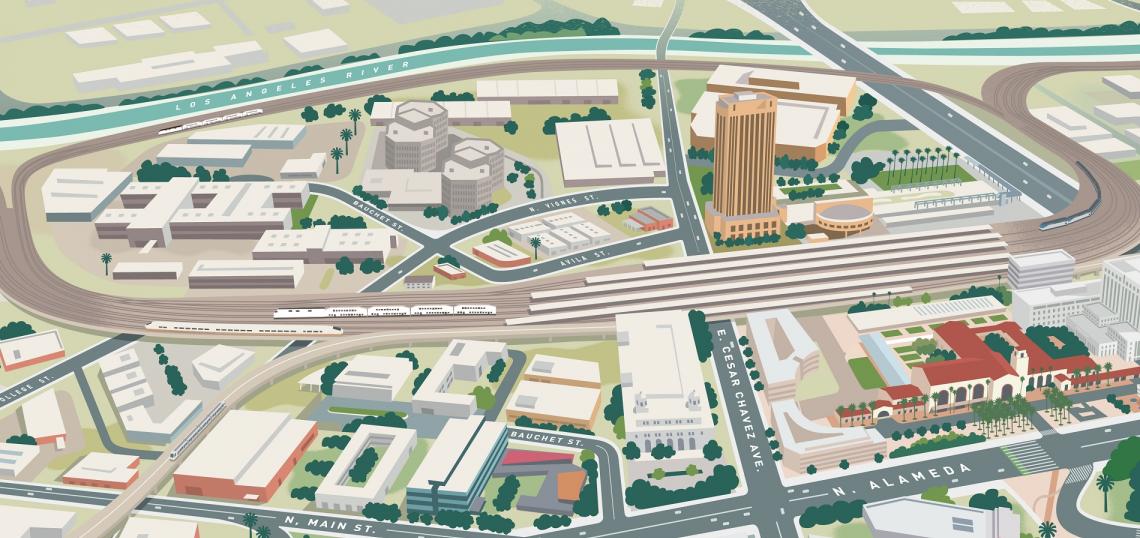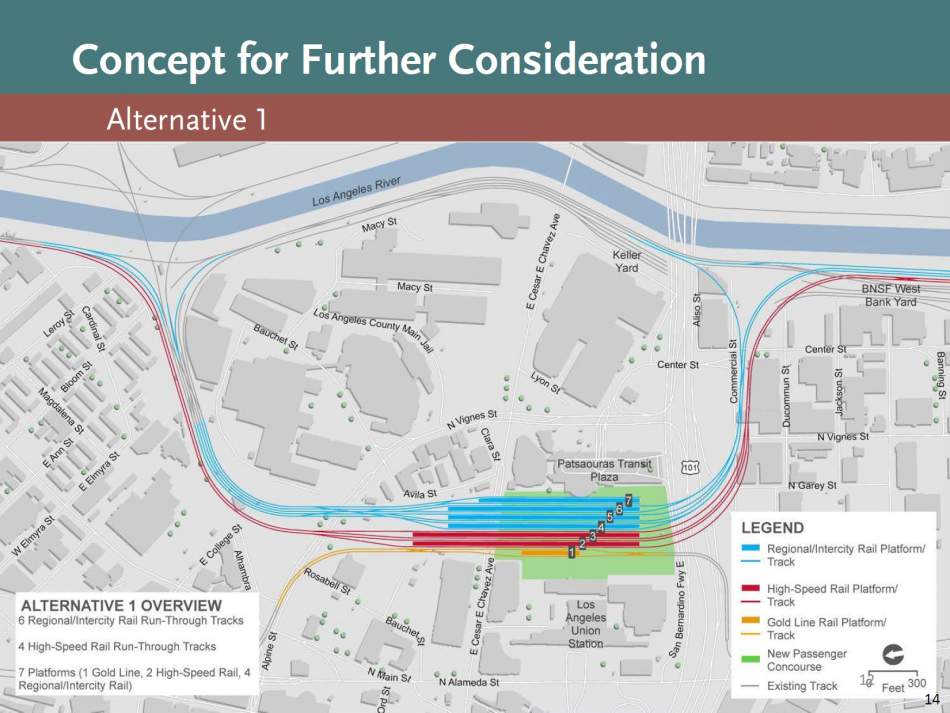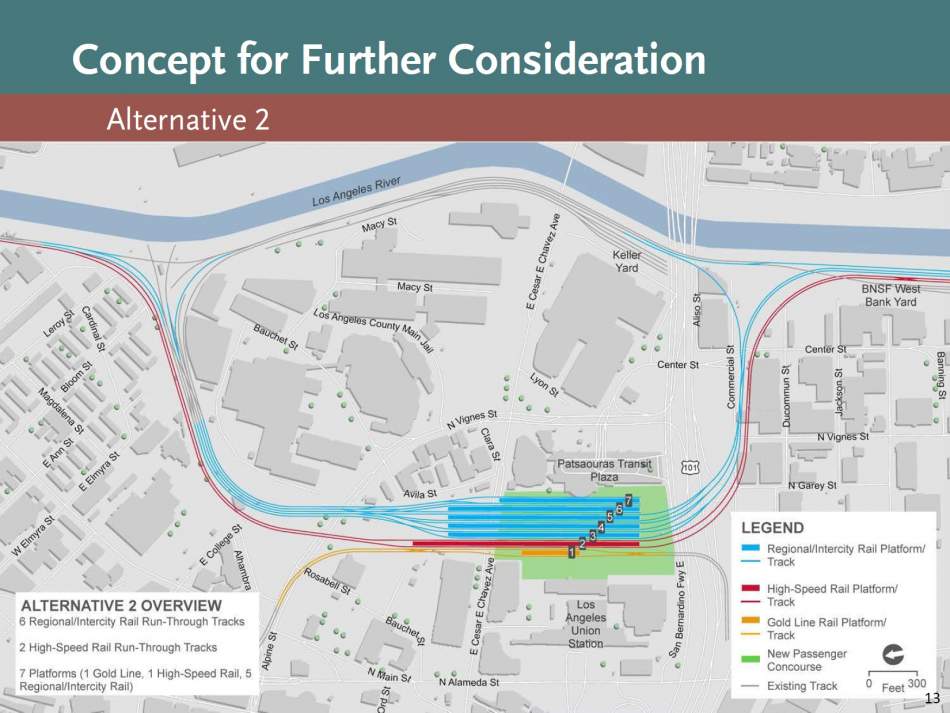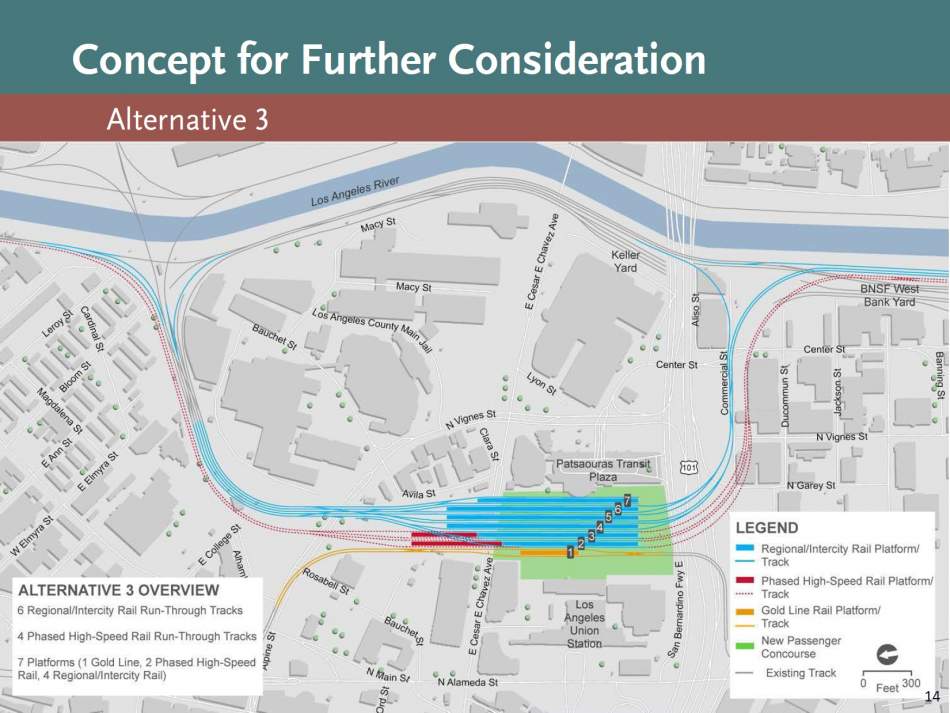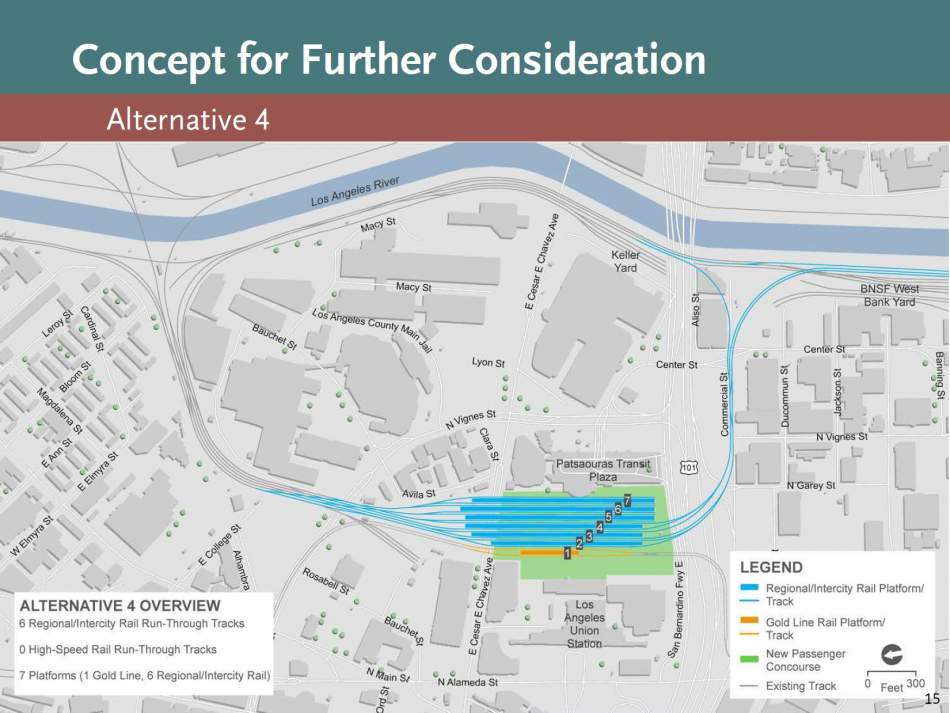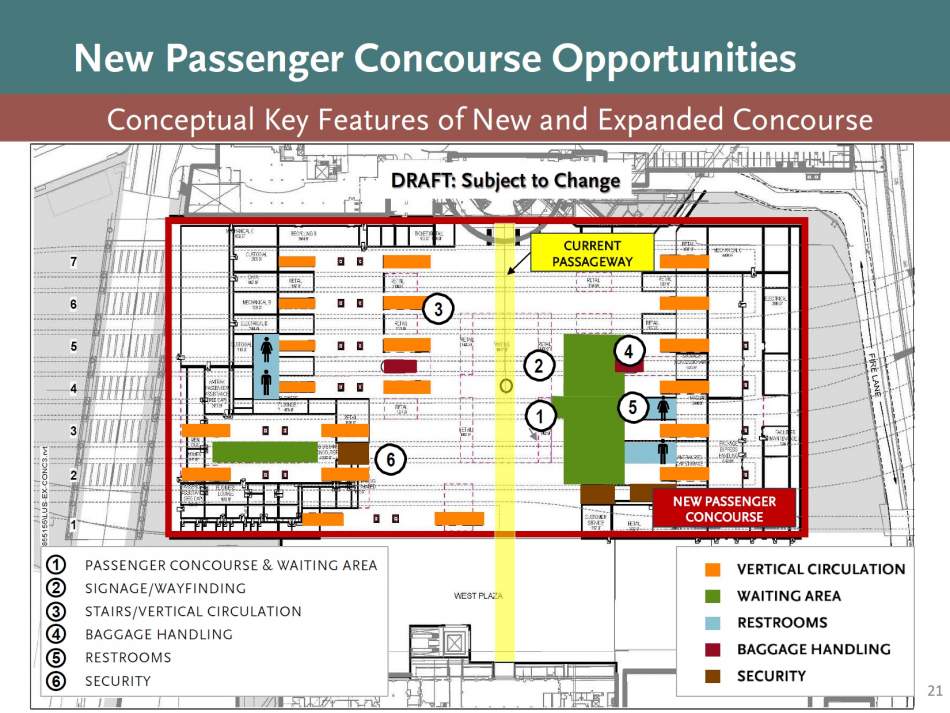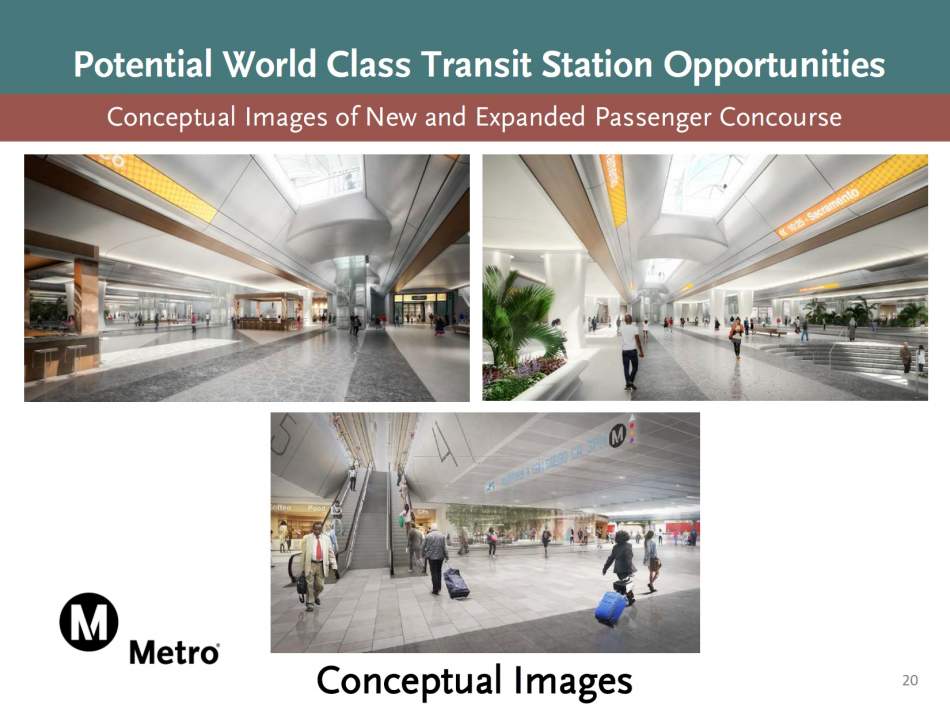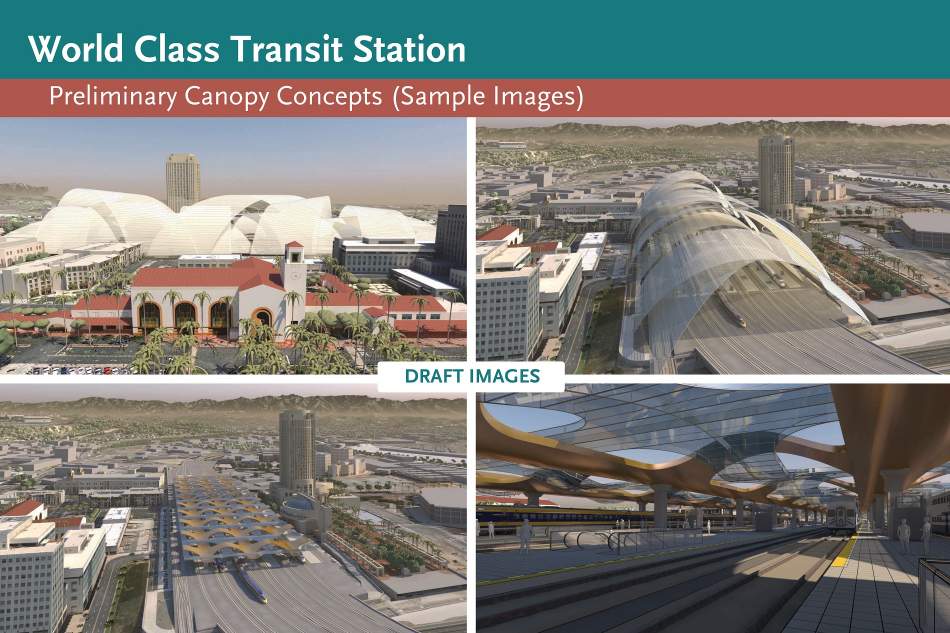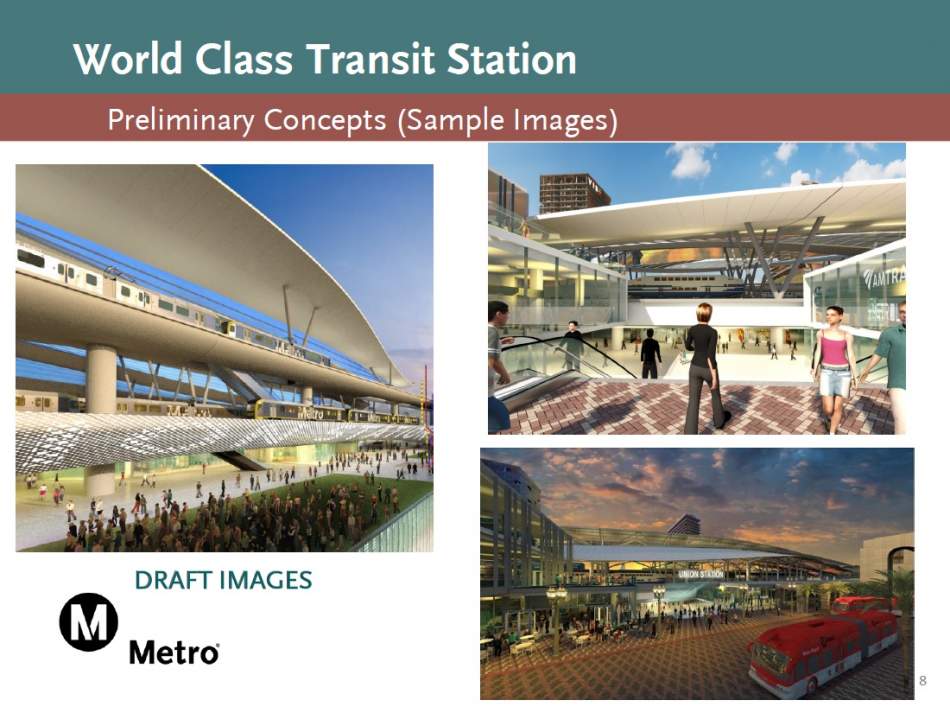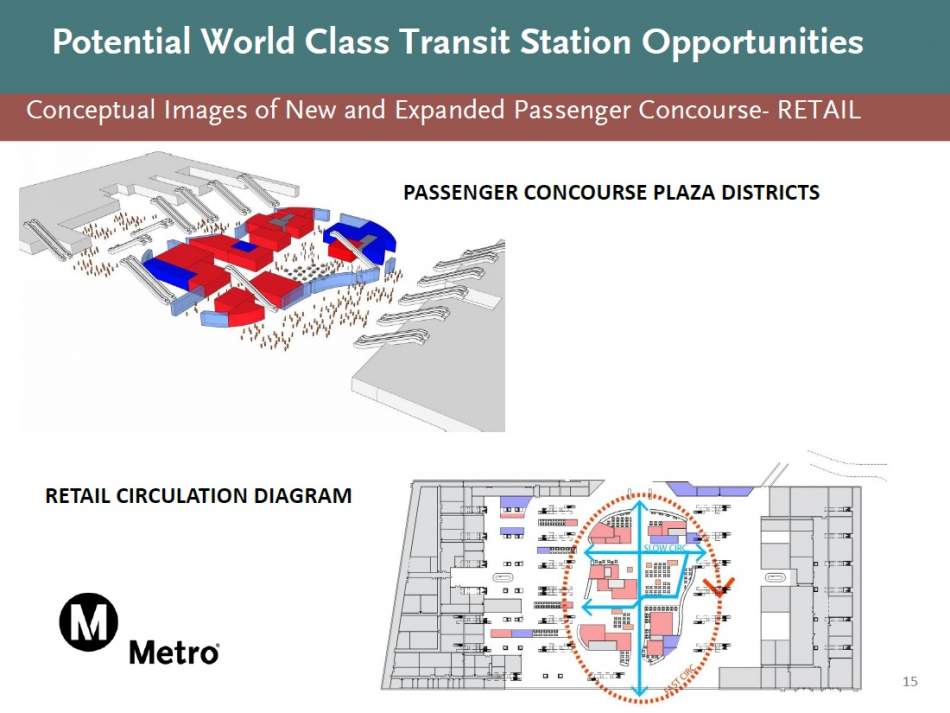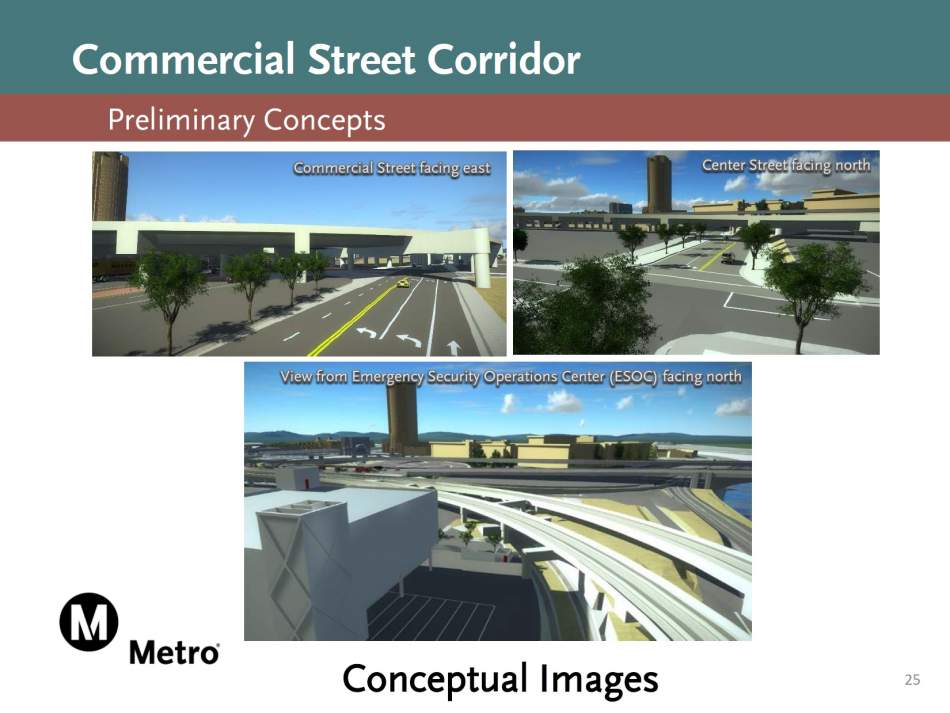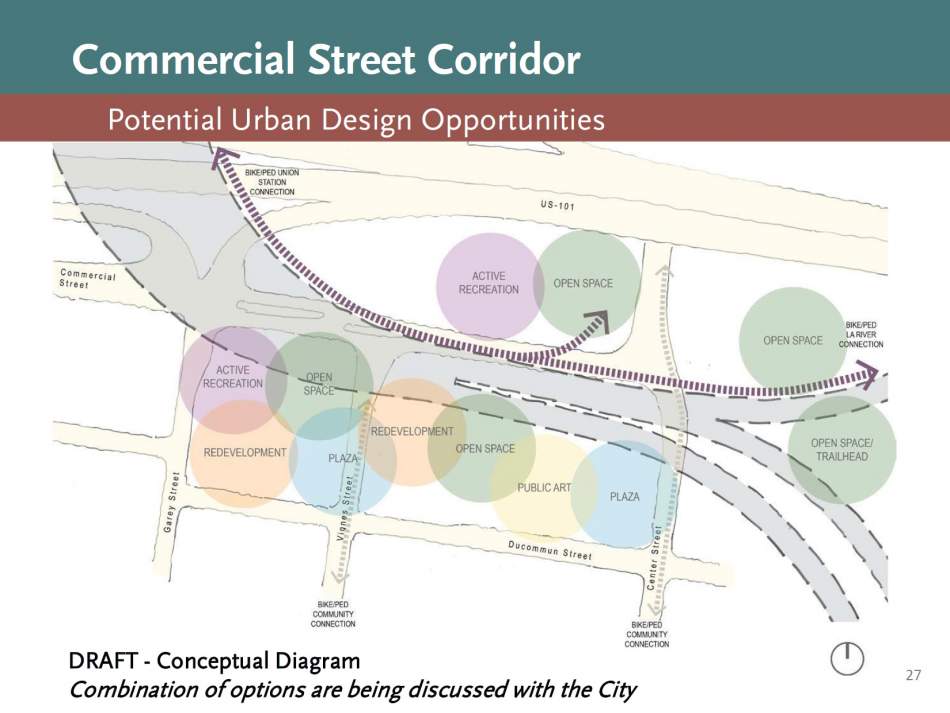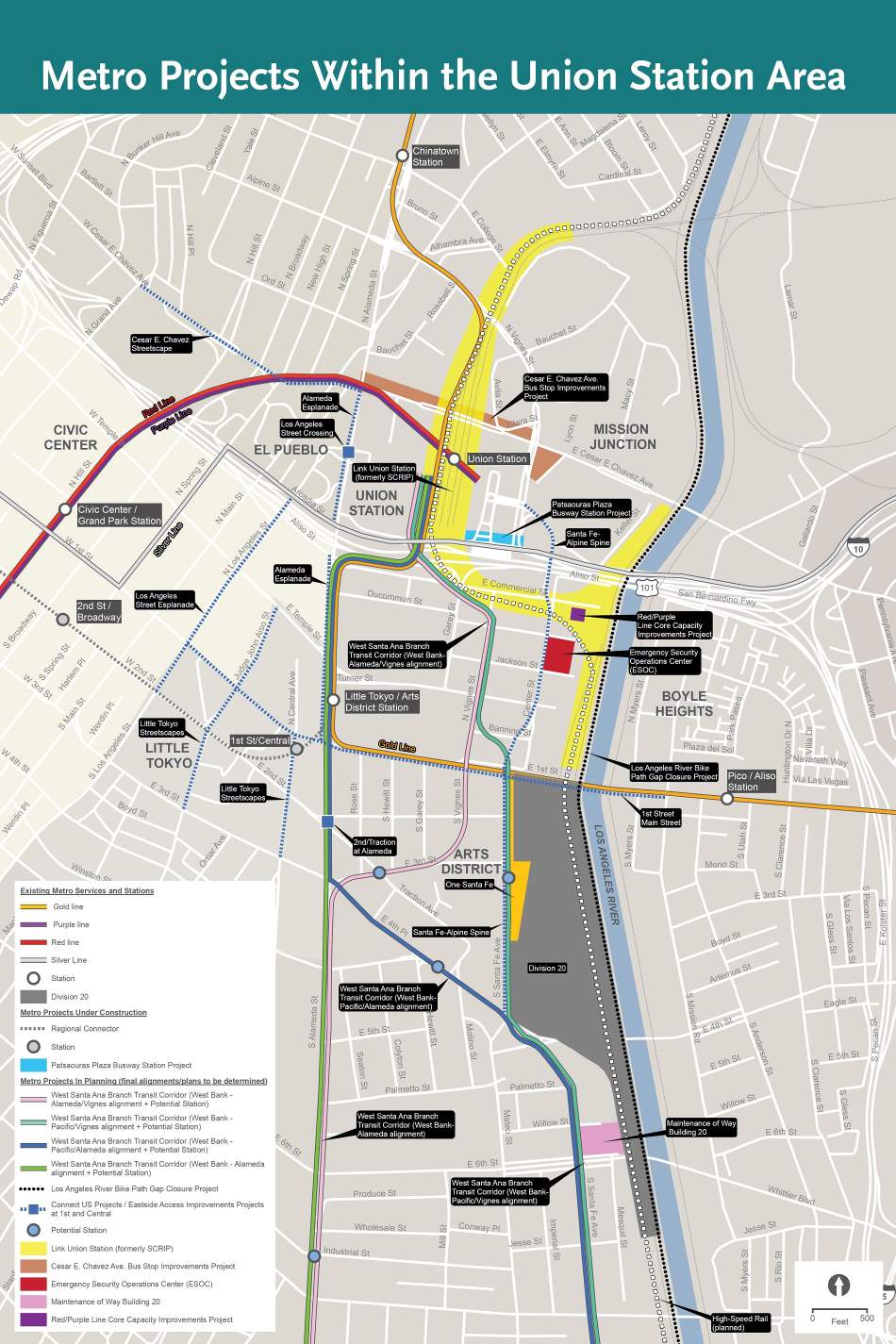The long-delayed plan to build run-through tracks at Union Station in Downtown Los Angeles continues to move forward, with Metro's Board of Directors scheduled to approve several alternatives for further environmental review at its meeting on Thursday.
The project, now known as Link US, would create through-routing for Metrolink, Amtrak and potentially California High Speed Rail trains by constructing new tracks above the US-101 freeway. Staff has put forth a preferred alternative and three additional concepts for further study, which differ in terms of scale and how they would address high speed rail.
Alternative 1
Alternative 1 is the most ambitious of the four options, calling a total of ten run-through tracks. Four of the tracks (and two platforms) would be dedicated to high speed rail service, while the remaining six tracks (and four platforms) would be retained for use by intercity and regional trains.
Existing Gold Line service would remain in place on the west side of the rail yard.
Metro staff recommended this alternative, as it provides the best capacity and operational flexibility moving forward. Additionally, Alternative 1 would be constructed in a single phase, thereby minimizing impacts on transit opertions.
Alternative 2 imagines eight run through tracks. Intercity and regional trains would be accommodated on six tracks and five platforms, while high speed rail would use one platform with two tracks.
As with Alternative 1, existing Gold Line service would remain.
Alternative 3 is similar in scope to Alternative 1, but instead plans for a phased implementation of the California High Speed Rail project. Platform extensions and a widening of the Union Station throat would be constructed as necessary.
The last of the options, Alternative 4, imagines future conditions in which the high speed rail project never reaches Union Station. Six run through tracks would be built to serve intercity and regional rail operators.
A new canopy, a new concourse
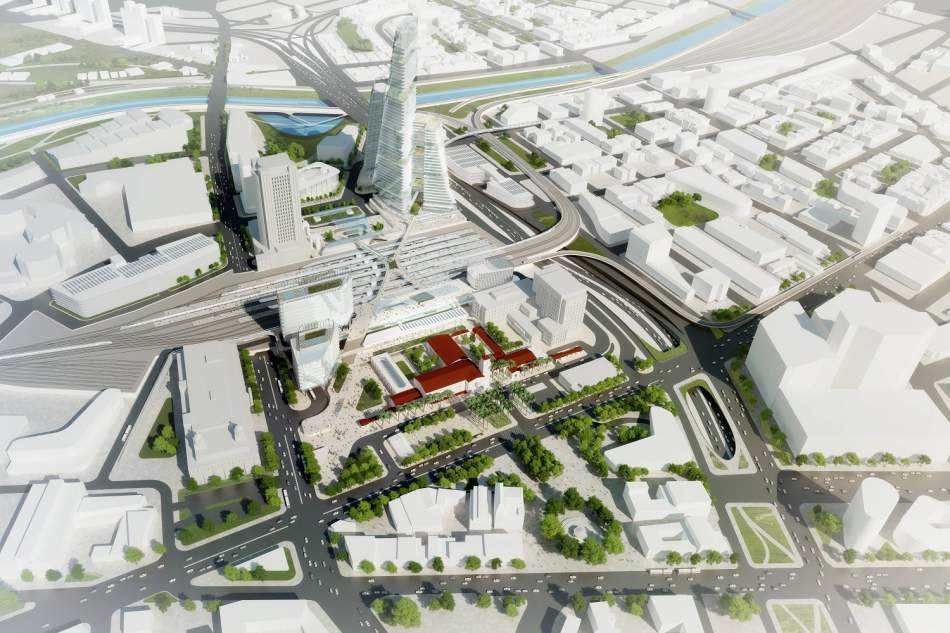
In 2014, Metro adopted the new Union Station Master Plan, which calls for substantial upgrades to the rail terminal and up to 5.9-million square feet of development on surrounding properties. Though an independent project, LinkUS has provided a convenient opportunity for Metro to implement one of the key components of the plan: an expanded passenger concourse.
Currently, passengers access the Union Station rail yard through a narrow tunnel which connects the historic station building to a mid-1990s expansion on the east side of the property. Metro is looking to improve upon these claustrophobic conditions by creating a more open, amenity-laden space, similar to those at major East Coast rail terminals.
Link US will require substantial construction within the rail yard, including raising the tracks to clear the adjacent freeway and widening the existing throat. The required work on the tracks conveniently aligns with the planned improvements for the concourse. The significantly expanded space would accommodate additional retail, baggage claim facilities and circulation elements.
Additionally, construction also provides an opportunity to replace the aging canopies that adorn Union Station's seven platforms. A presentation given by Metro in November 2016 shows conceptual renderings for two potential options: a swooping structure of white translucent material and a weaving array of metal.
Elevated tracks and urban design
After crossing the US-101 freeway, the proposed run-through tracks would continue east though the northern Arts District before merging back into an existing railroad right-of-way along the west bank of the L.A. River. The elevated structures would run along the northern side of Commercial Street, as seen in the conceptual images above.
Rather than let the space surrounding the tracks remain a barren wasteland, Metro has instead proposed facilitating development and open space along the route. Properties located north of Commercial Street could be used for active recreation and open space, with opportunities for a connection to the L.A. River. A Metro presentations calls to mind freeway underpass parks, such as those seen in Toronto, Canada.
The south side of Commercial Street presents opportunities for additional open space, but also commercial development that could be integrated into the rail infrastructure. Shops and restaurants have previously been built beneath elevated sections of track in cities such as Berlin and Tokyo.
Metro's current timeline Link US calls for a final environmental impact report to be adopted in late 2017, after which point the project would move on to the engineering phase.
In addition, the coming decades will further shape the way Angelenos interact with Union Station through projects such as:
- A potential LAX - Union Station express rail line.
- A reimagined Union Station forecourt.
- Improved bus stops.
- The new SIlver Line bus platform taking shape in the median of the El Monte Busway.
- The second phase of the Foothill Gold Line extension.
- A possible Arts District extension of the Red and Purple Lines.
- More frequent rail service and new stations between Burbank and DTLA.
- The West Santa Ana Branch.
- Union Station Archive (Urbanize LA)




